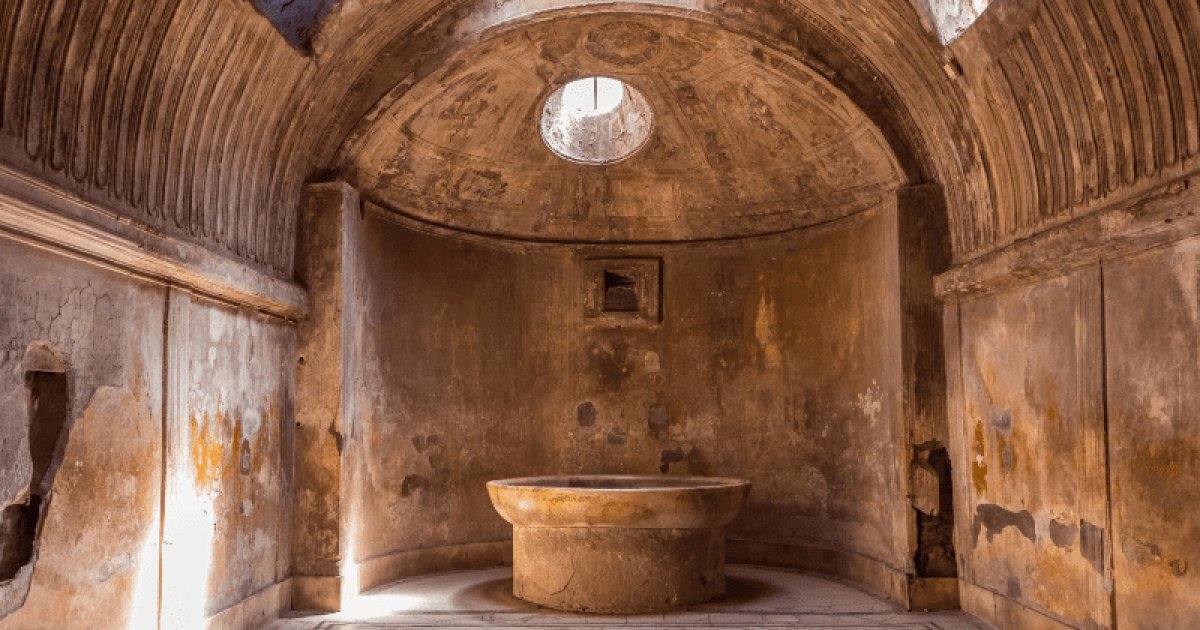THERMAE-REGIO VII, Thermae-Regio Vii
 Language: English / USA
Language: English / USA
Before the earthquake in 62 AD, Pompeii was a city flush with water, with at least 40 public fountains distributed roughly every 80 meters, several public and private spa sites, and numerous domus and businesses served by running water from the Serino Aqueduct.
In Pompeii, even today, in Regio VI you can see the Castellum Aquae, a structure built at the highest point of the city, inside which was a basin for collecting water from the aqueduct, from which it was then conveyed to fountains, baths and private users.
Unfortunately, damage to the water supply caused by the earthquake 17 years earlier and the seismic tremors in the weeks preceding the eruption of Vesuvius had interrupted the flow of water, so the baths were also unusable. Just think, there were no less than five public baths in Pompeii, three of which were located in Regio VII: the Terme Suburbane, the Terme del Foro and the Terme Stabiane.
The Terme Suburbane are perhaps the most beautiful in Pompeii because of the richness of the frescoes and decorations, especially those in the frigidarium.
The Terme Stabiane are the largest and oldest, dating back as far as the 3rd century BC, with the entrance facing a large courtyard with a portico and swimming pool.
In the Terme del Foro, on the other hand, the room that stands out the most for its decoration is the male tepidarium, with fine stucco work and male figures made of terracotta.
As was the custom at the time, all these structures had separate entrances and rooms for men and women, and during your visit, you will notice that the men's rooms were often larger and better decorated than the women's.
In the baths there was a gymnasium for exercising, a swimming pool, rooms with cold, lukewarm and hot water – namely the frigidarium, tepidarium and calidarium – massages and bathing.
Here’s an interesting fact: you should know that prostitution was widespread in Roman times, as evidenced by the presence in Pompeii of several lupanari, places dedicated to this activity. But not everyone knows that this trade was also practiced illegally at the baths, as evidenced by no less than 16 erotic-themed paintings found in the changing room of the Terme Suburbane.



